使用云平台的 destination 服务消费 Internet 上的 OData service
通过SAP云平台上的destination我们可以消费Internet上的OData service或者其他通过HTTP方式暴露出来的服务。
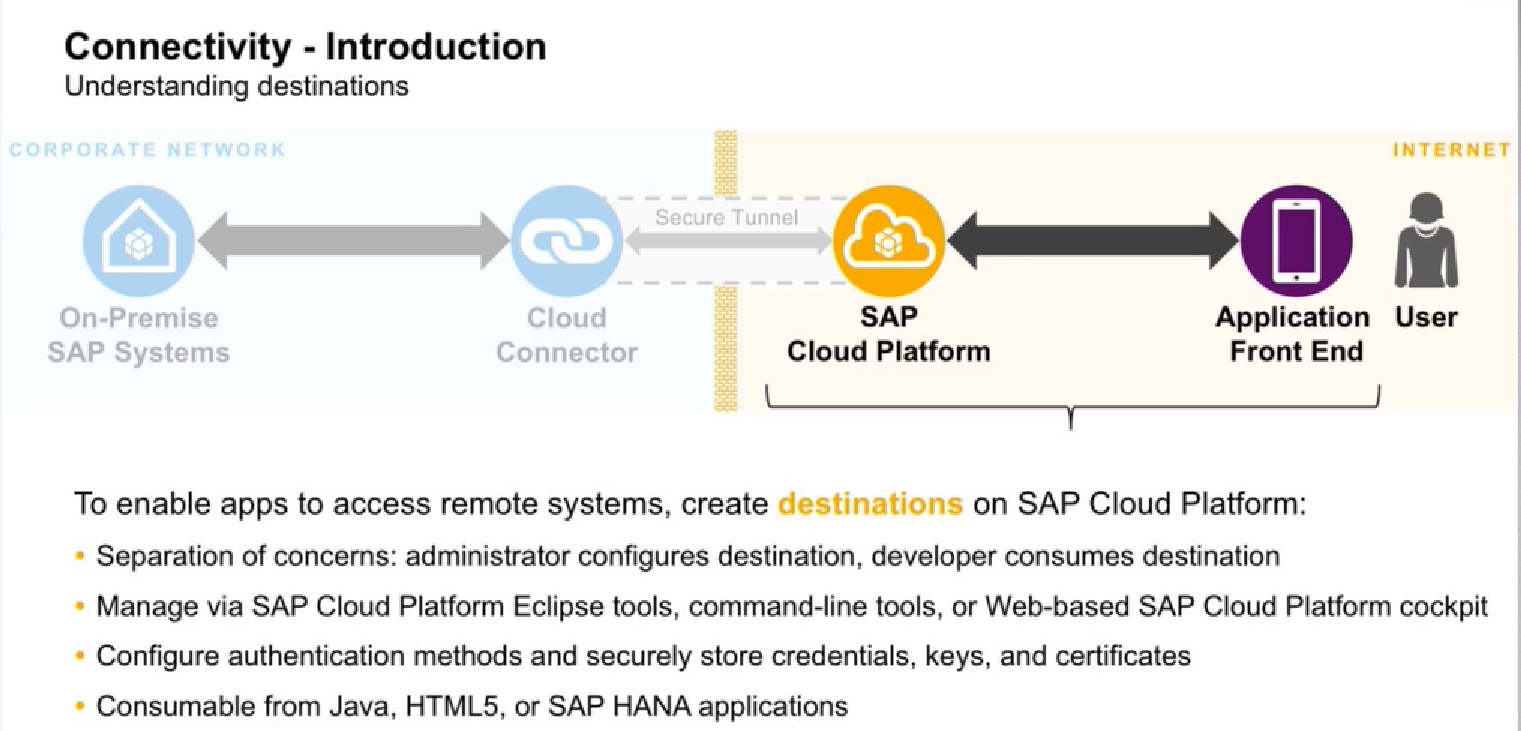
创建一个新的destination:
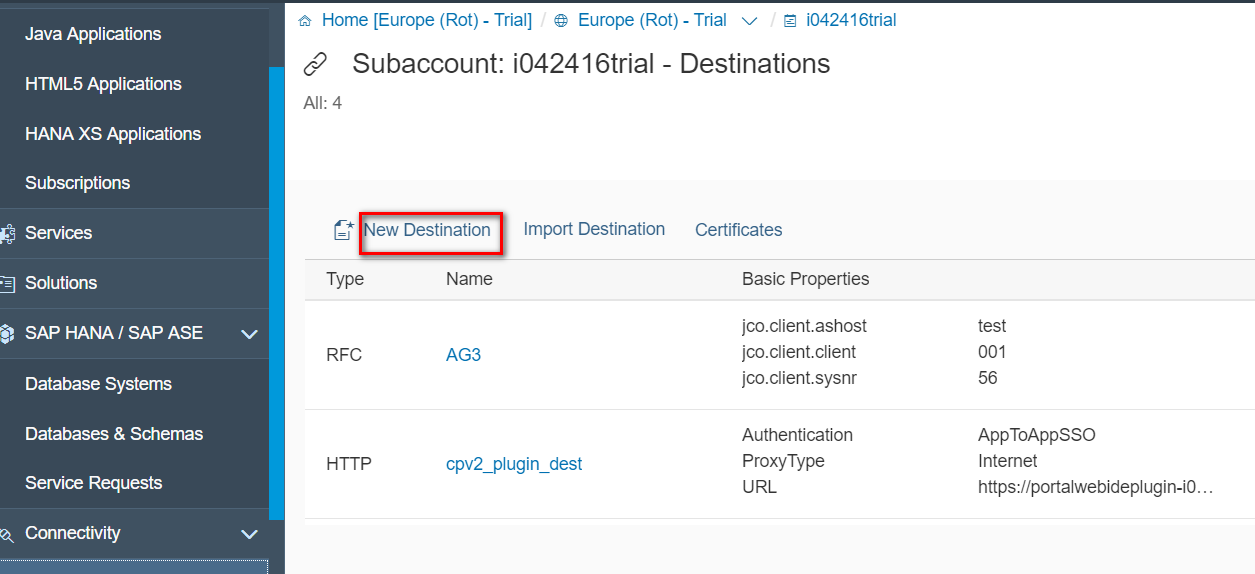
维护如下属性:
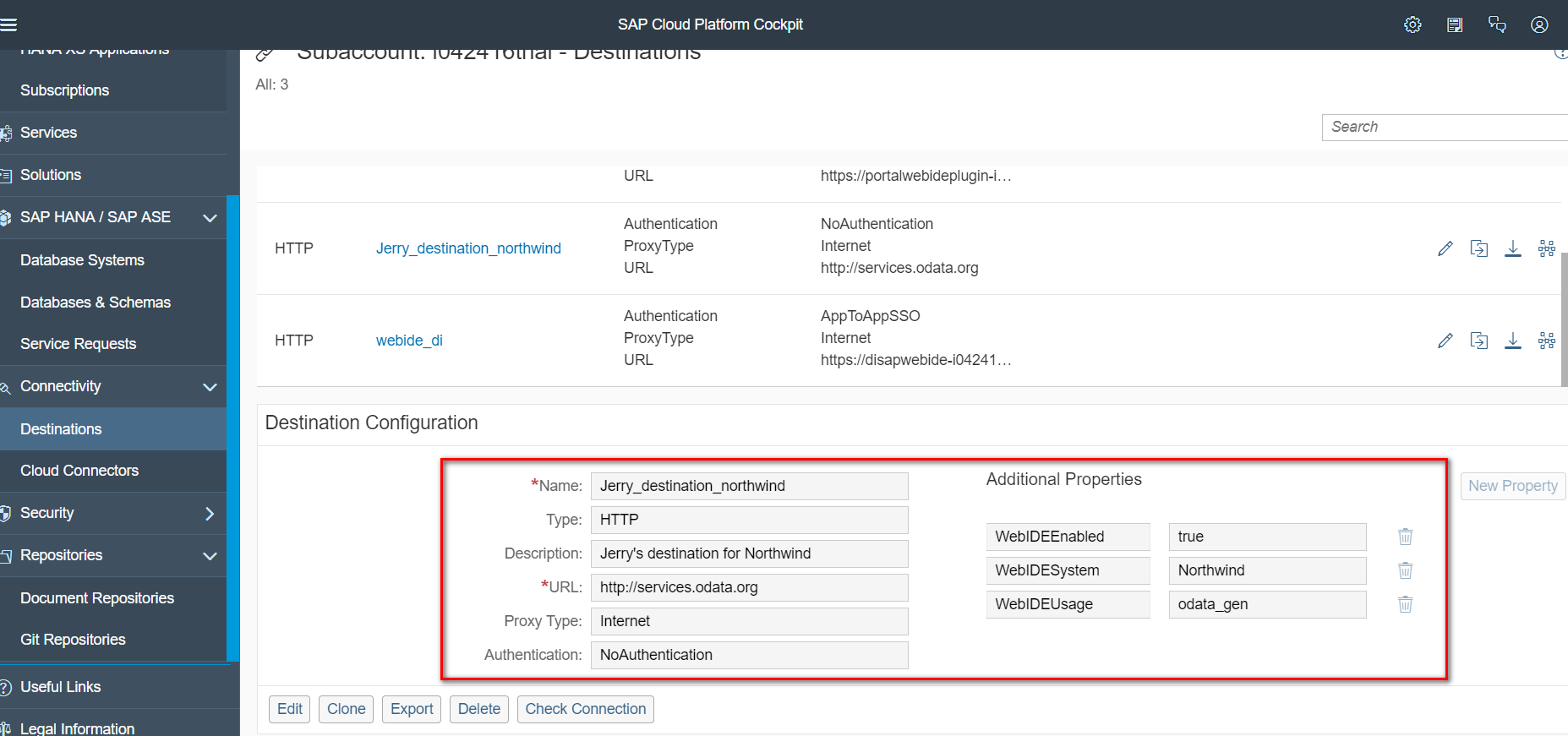
点击Check Connection确保该destination正常工作:
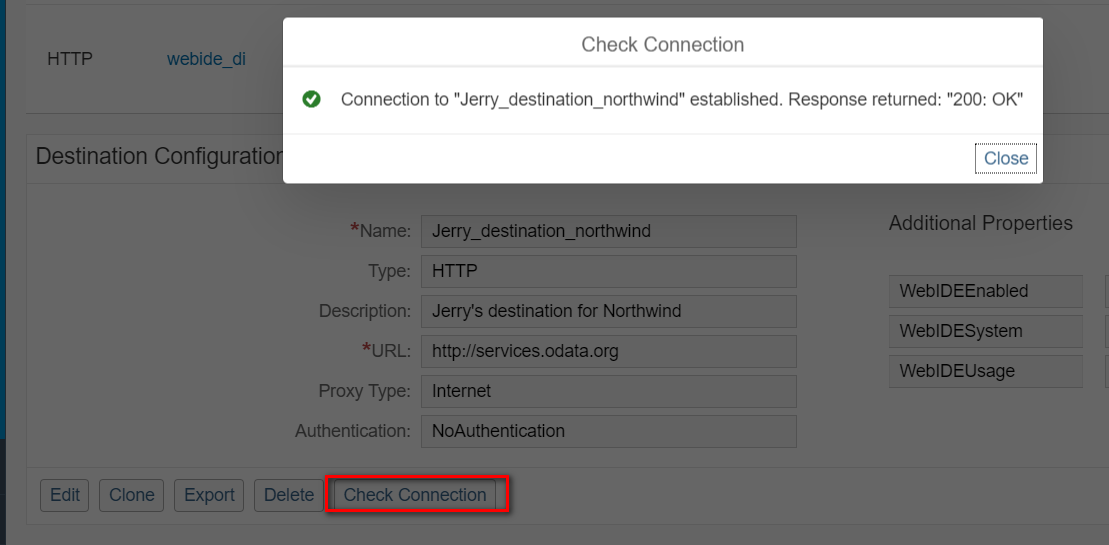
在WebIDE里新建一个Fiori Worklist Application:
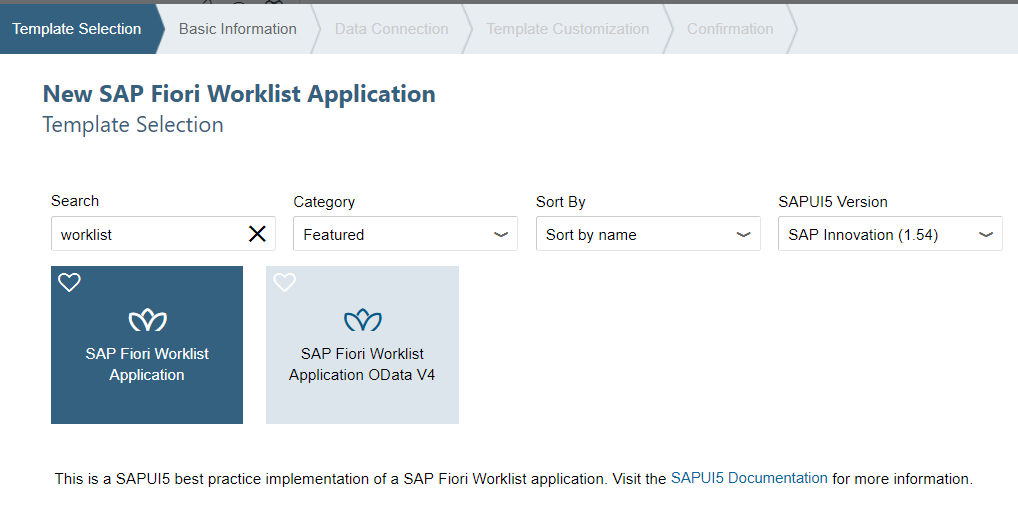
从Service url选择之前创建好的destination:
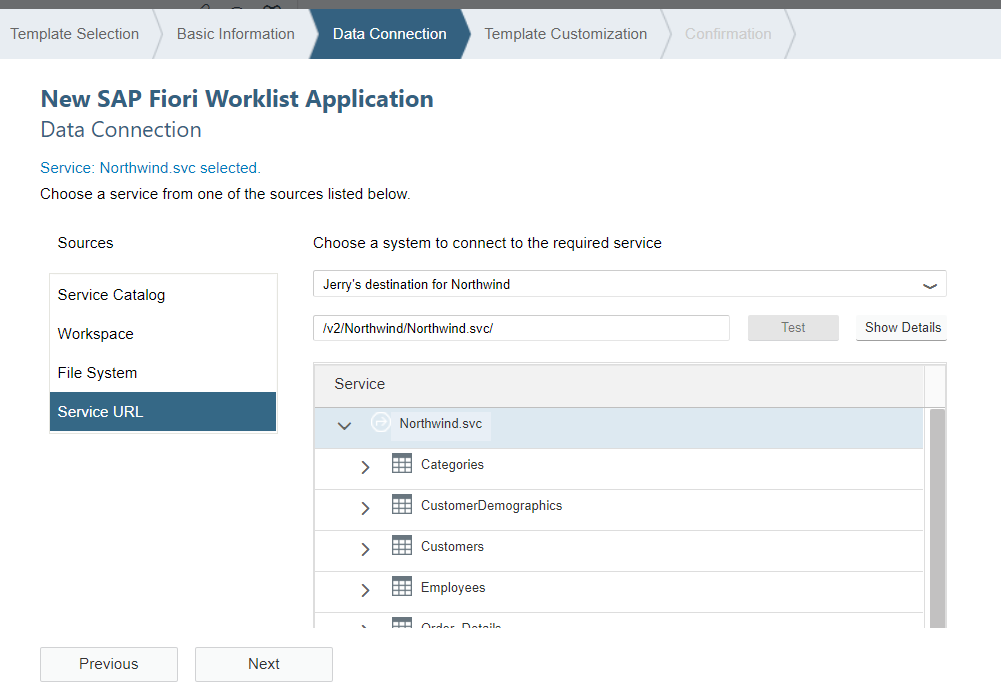
在Object Collection里选择Alphabetical_list_of_products,Object Collection ID选择Product ID:

Fiori 应用创建成功之后,从右键菜单里选择Run->Run As->Web Application:
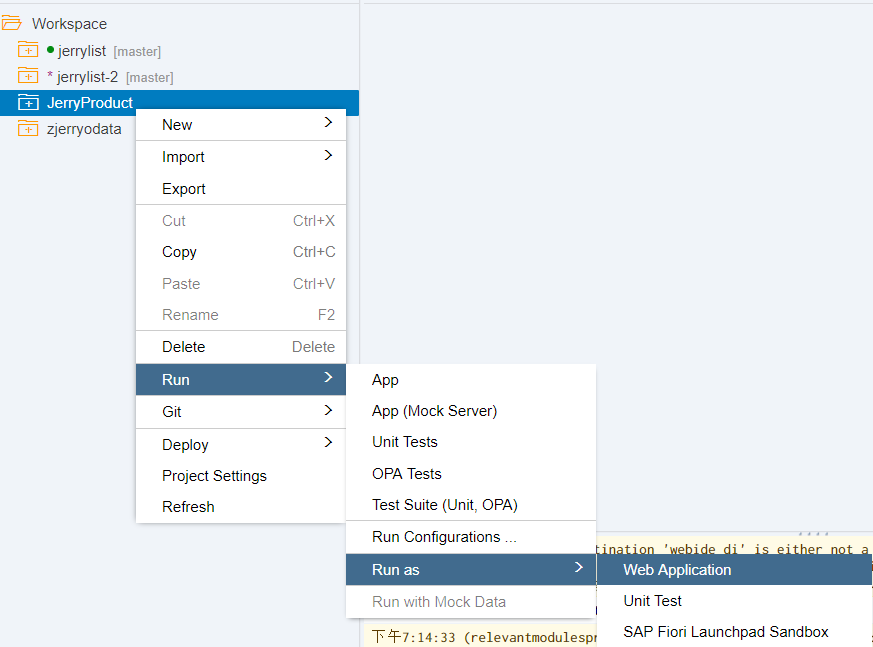
这样就实现了从SAP云平台消费Internet上的OData service的需求。
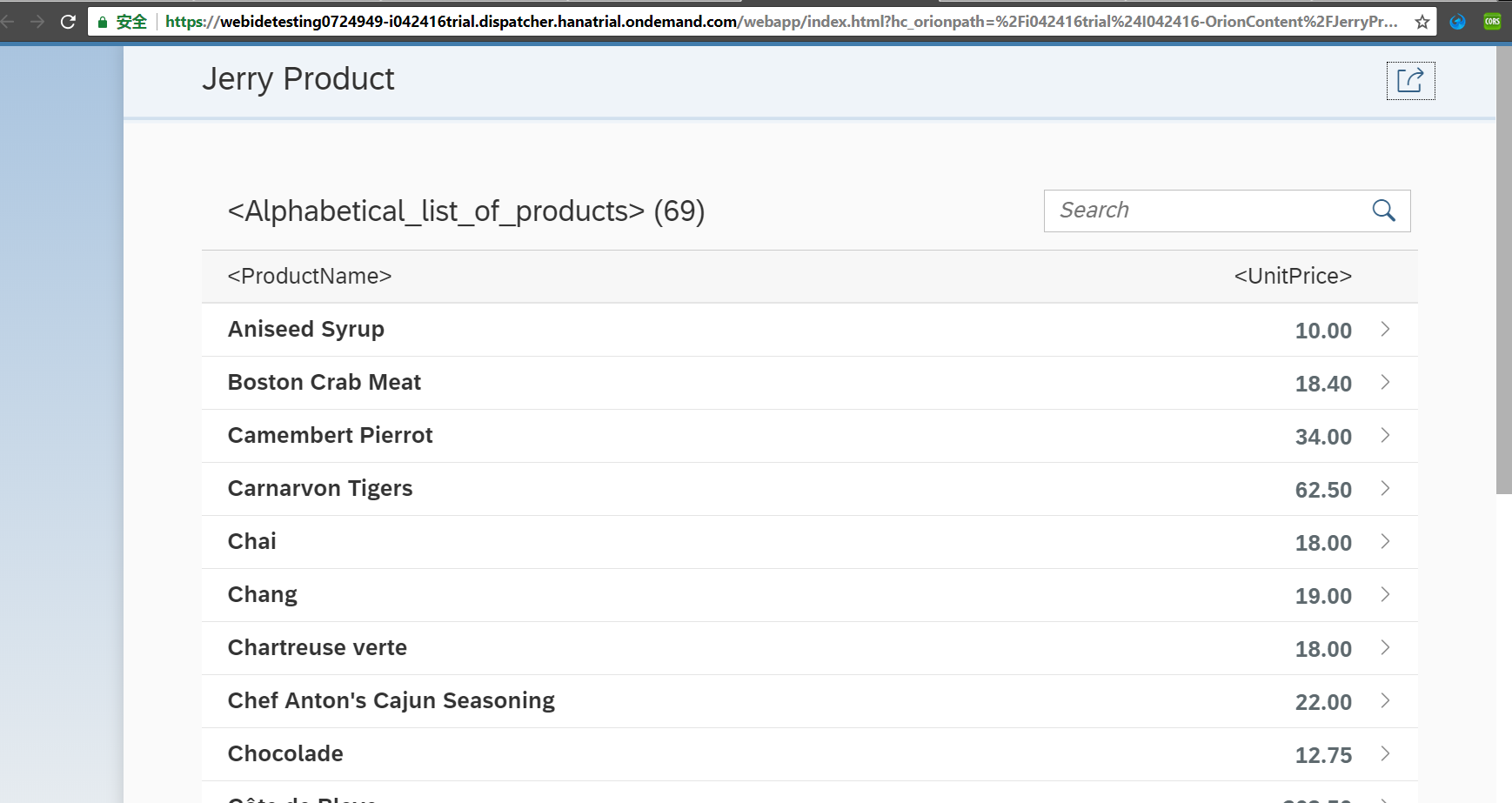
ABAP和Java的destination和JNDI
Netweaver里使用事务码SM59创建Destination:

Java
新建一个destination:
[外链图片转存失败,源站可能有防盗链机制,建议将图片保存下来直接上传(img-B3nrP4Tg-1635083096529)(https://upload-images.jianshu.io/upload_images/2085791-0b955d4f581ce6bc.png?imageMogr2/auto-orient/strip|imageView2/2/w/1240)]

测试代码:
try {
Context ctx = new InitialContext();
ConnectivityConfiguration configuration = (ConnectivityConfiguration) ctx.lookup("java:comp/env/connectivityConfiguration");
DestinationConfiguration destConfiguration = configuration.getConfiguration(destinationName);
if (destConfiguration == null) {
response.sendError(HttpServletResponse.SC_INTERNAL_SERVER_ERROR,
String.format("Destination %s is not found. Hint:"
+ " Make sure to have the destination configured.", destinationName));
return;
}
// Get the destination URL
String value = destConfiguration.getProperty("URL");
URL url = new URL(value + "xml?origins=Walldorf&destinations=Paris");
String proxyType = destConfiguration.getProperty("ProxyType");
Proxy proxy = getProxy(proxyType);
urlConnection = (HttpURLConnection) url.openConnection(proxy);
injectHeader(urlConnection, proxyType);
// Copy content from the incoming response to the outgoing response
InputStream instream = urlConnection.getInputStream();
OutputStream outstream = response.getOutputStream();
copyStream(instream, outstream);
} catch (Exception e) {
// Connectivity operation failed
String errorMessage = "Connectivity operation failed with reason: "
+ e.getMessage()
+ ". See "
+ "logs for details. Hint: Make sure to have an HTTP proxy configured in your "
+ "local environment in case your environment uses "
+ "an HTTP proxy for the outbound Internet "
+ "communication.";
LOGGER.error("Connectivity operation failed", e);
response.sendError(HttpServletResponse.SC_INTERNAL_SERVER_ERROR,
errorMessage);
}
通过JNDI获得destination配置的url:
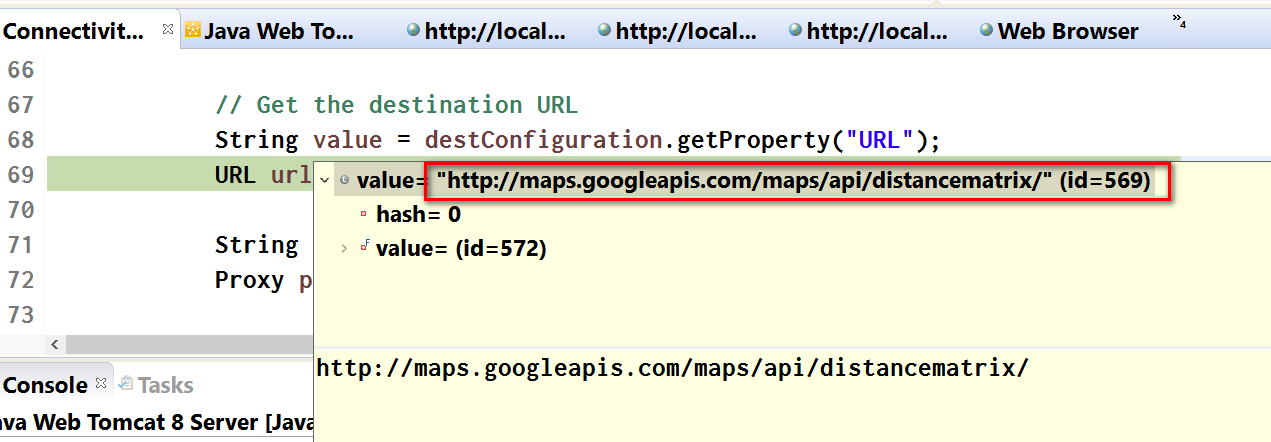
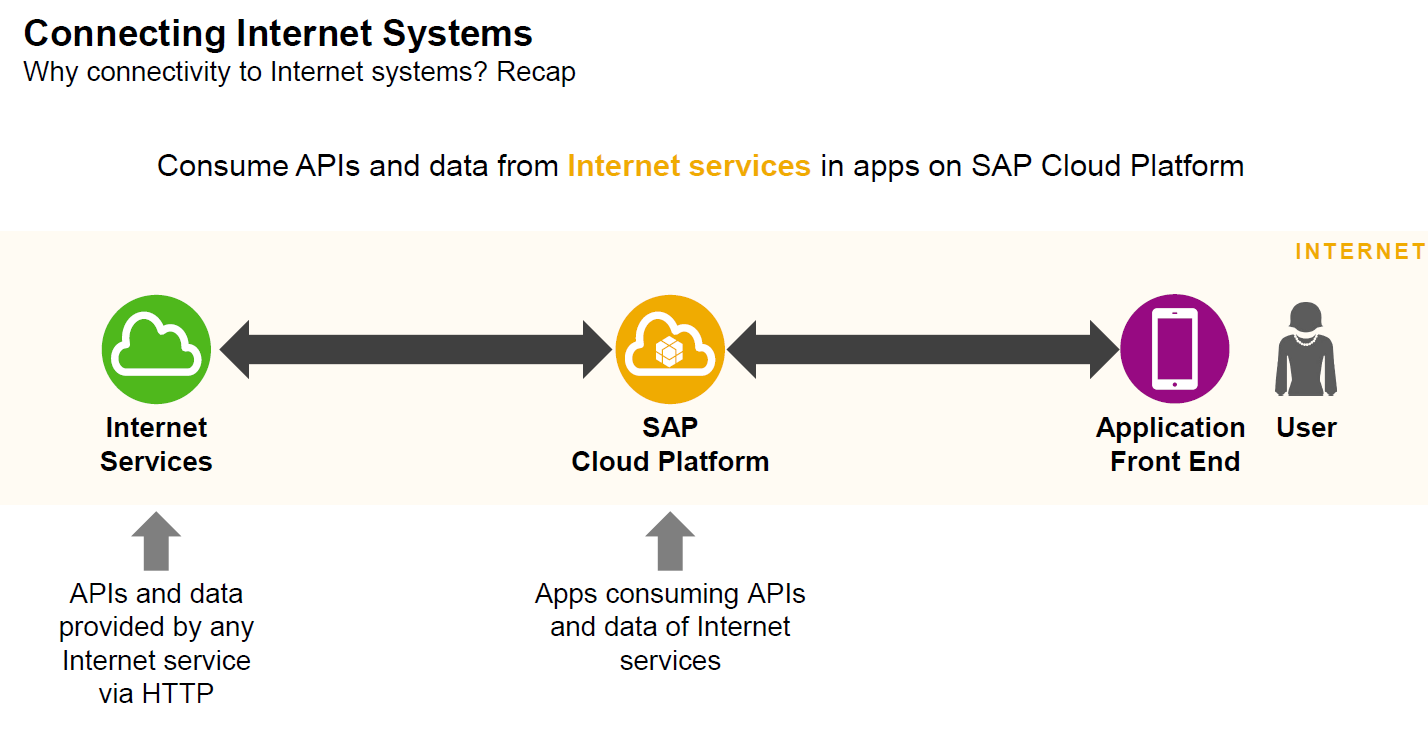
以Internet Service http://maps.googleapis.com/maps/api/distancematrix/xml?origins=Walldorf&destinations=Berlin为例,
在浏览器里访问这个url,得到输出:从Walldorf到Berlin的距离。

如何让一个部署到SAP云平台的Java应用也能访问到该internet service呢?
首先在SAP云平台里创建一个destination,维护service的end point:
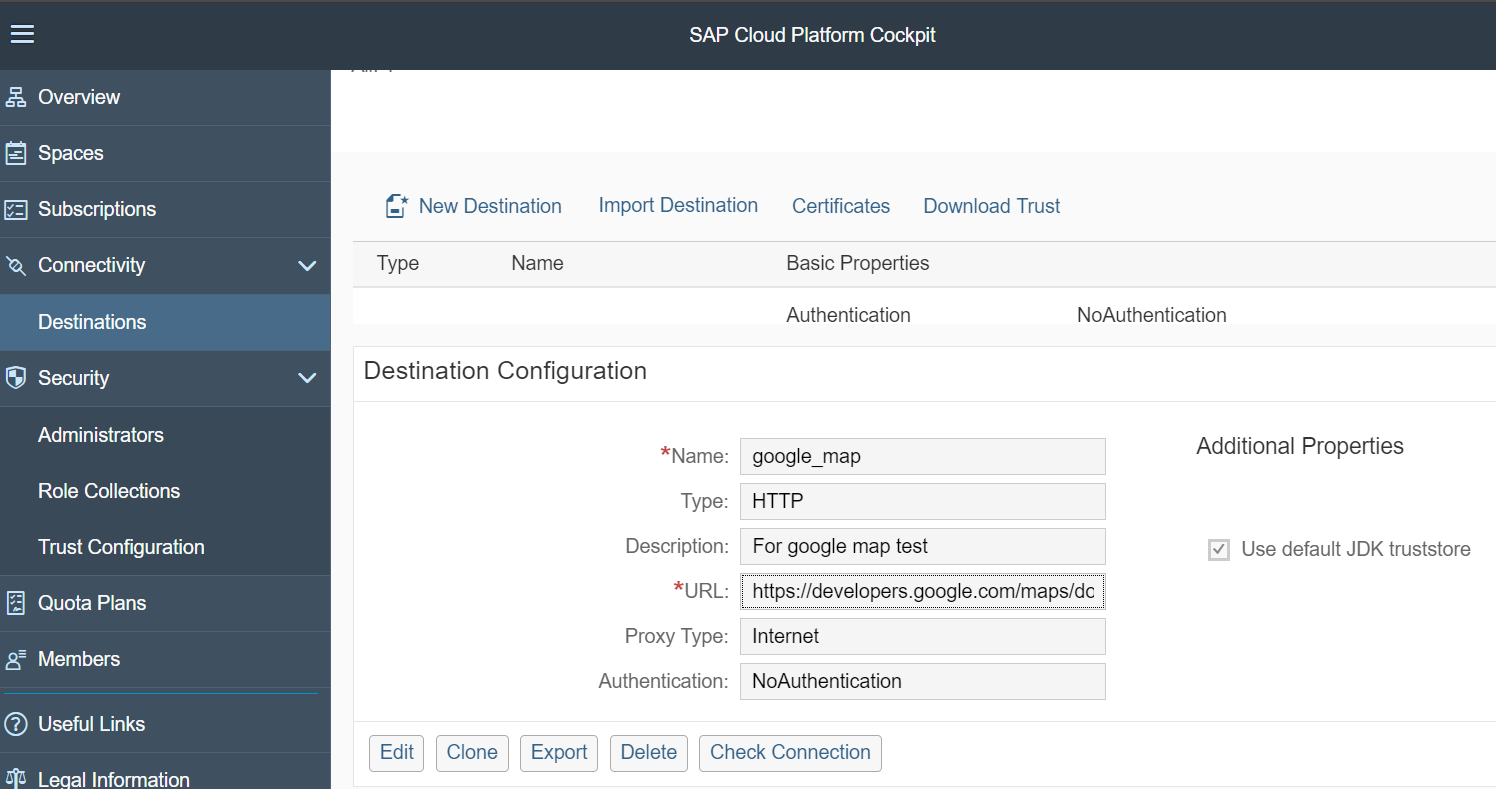
在Java代码里使用SAP云平台里创建的destination:
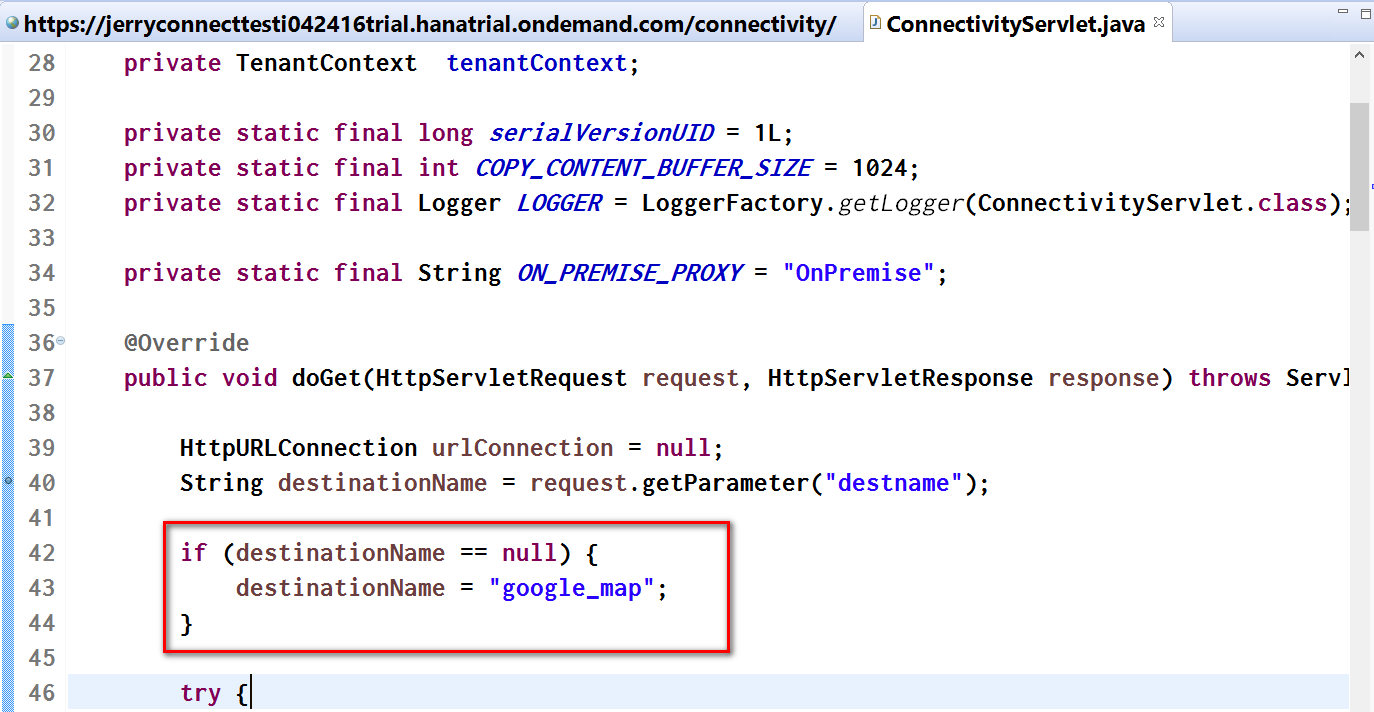
然后使用JNDI service读取destination里配置的url:
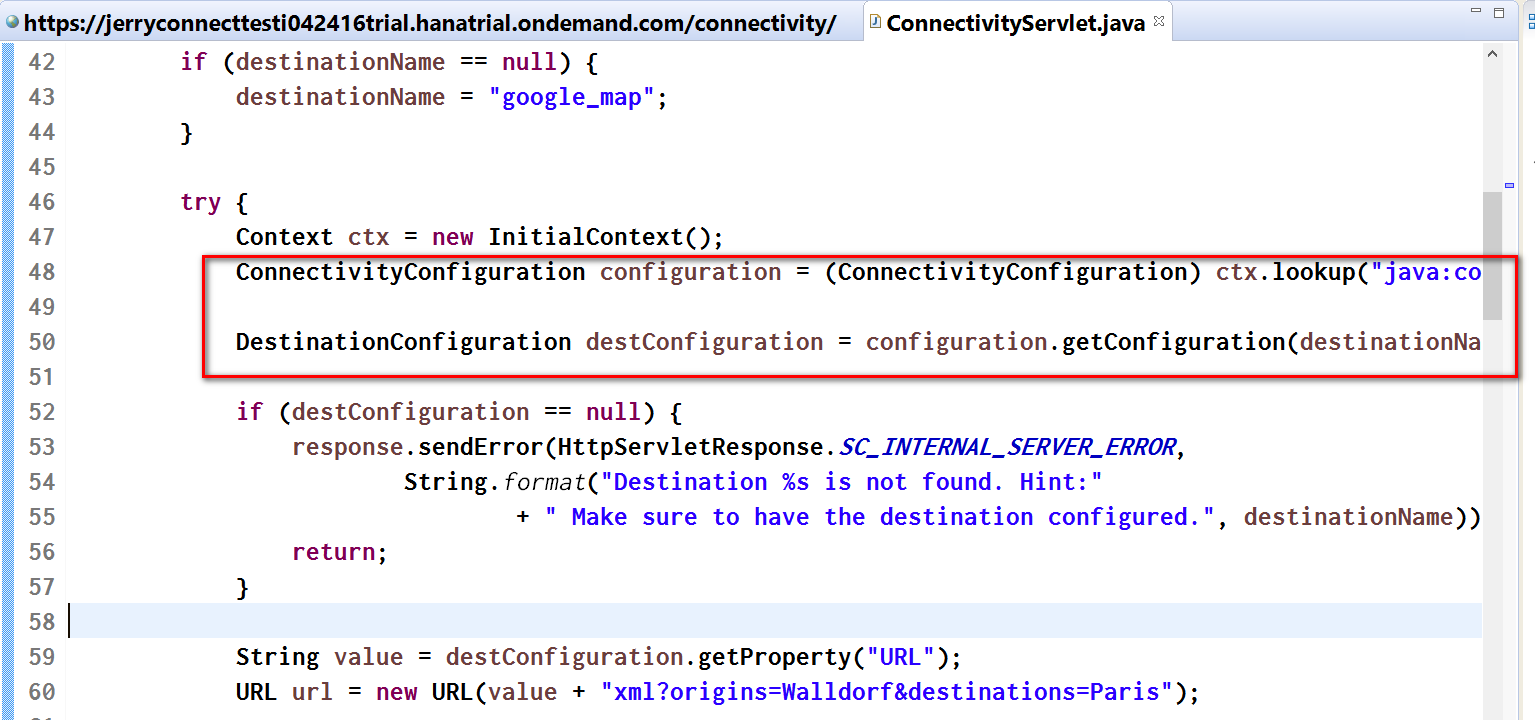
部署到SAP云平台之后,在Eclipse里看到preview结果:
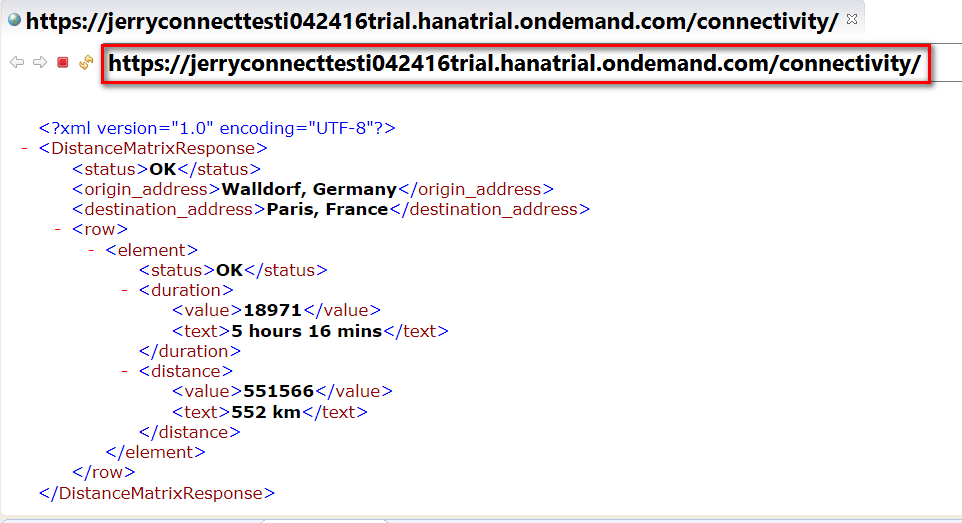
SAP云平台Cockpit显示如下:
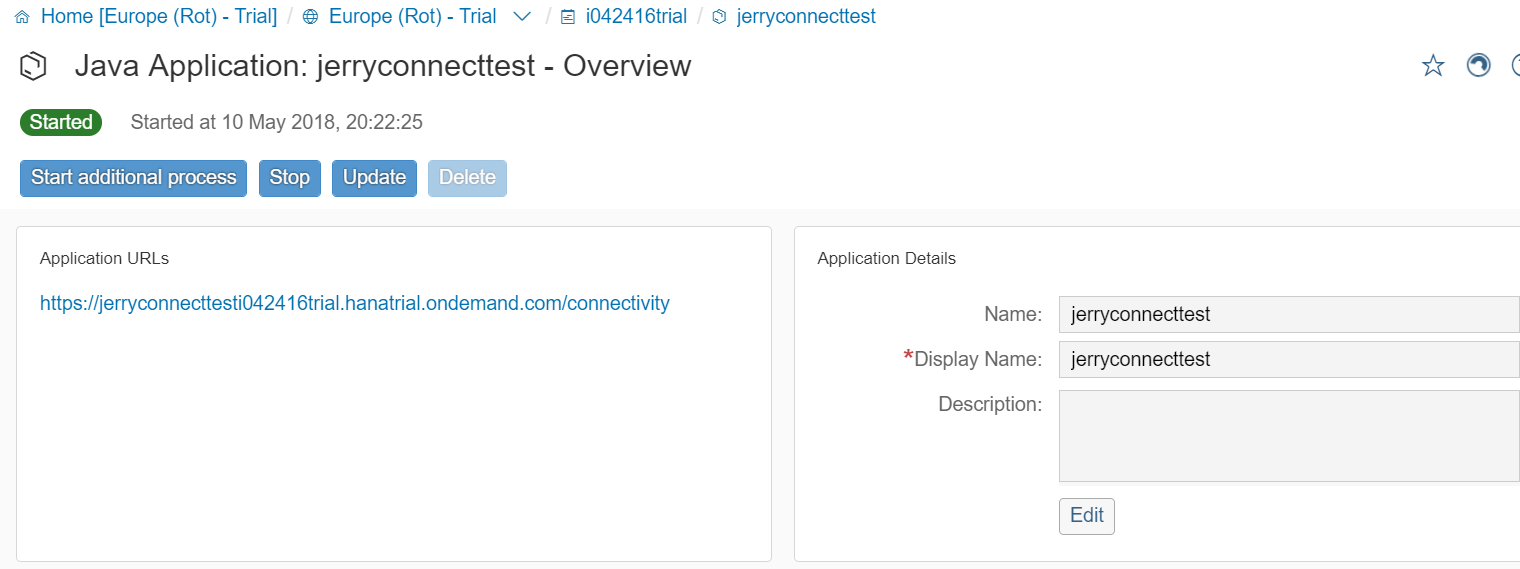
浏览器访问如下:
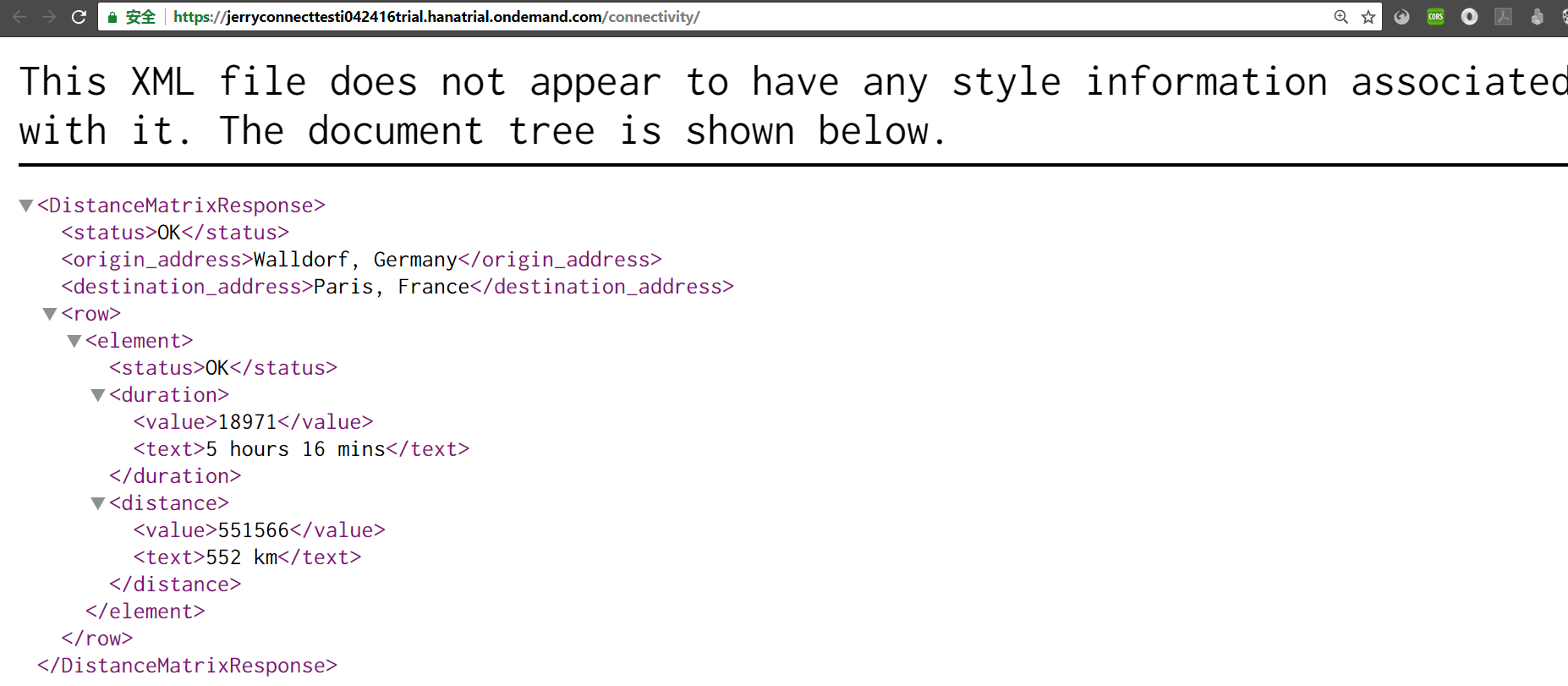
web.xml:
<?xml version="1.0" encoding="UTF-8"?>
<web-app xmlns:xsi="http://www.w3.org/2001/XMLSchema-instance" xmlns="http://java.sun.com/xml/ns/javaee"
xmlns:web="http://java.sun.com/xml/ns/javaee/web-app_2_5.xsd" xsi:schemaLocation="http://java.sun.com/xml/ns/javaee http://java.sun.com/xml/ns/javaee/web-app_2_5.xsd"
id="WebApp_ID" version="2.5">
<!-- Main sample servlet mapped to / so that the integration test harness can detect readiness (generic for all samples) -->
<servlet>
<servlet-name>ConnectivityServlet</servlet-name>
<servlet-class>com.sap.cloud.sample.connectivity.ConnectivityServlet</servlet-class>
</servlet>
<servlet-mapping>
<servlet-name>ConnectivityServlet</servlet-name>
<url-pattern>/</url-pattern>
</servlet-mapping>
<!-- Declare the JNDI lookup of destination -->
<resource-ref>
<res-ref-name>connectivityConfiguration</res-ref-name>
<res-type>com.sap.core.connectivity.api.configuration.ConnectivityConfiguration</res-type>
</resource-ref>
</web-app>
package com.sap.cloud.sample.connectivity;
import java.io.IOException;
import java.io.InputStream;
import java.io.OutputStream;
import java.net.HttpURLConnection;
import java.net.InetSocketAddress;
import java.net.Proxy;
import java.net.URL;
import javax.annotation.Resource;
import javax.naming.Context;
import javax.naming.InitialContext;
import javax.servlet.ServletException;
import javax.servlet.http.HttpServlet;
import javax.servlet.http.HttpServletRequest;
import javax.servlet.http.HttpServletResponse;
import org.slf4j.Logger;
import org.slf4j.LoggerFactory;
import com.sap.cloud.account.TenantContext;
import com.sap.core.connectivity.api.configuration.ConnectivityConfiguration;
import com.sap.core.connectivity.api.configuration.DestinationConfiguration;
public class ConnectivityServlet extends HttpServlet {
@Resource
private TenantContext tenantContext;
private static final long serialVersionUID = 1L;
private static final int COPY_CONTENT_BUFFER_SIZE = 1024;
private static final Logger LOGGER = LoggerFactory.getLogger(ConnectivityServlet.class);
private static final String ON_PREMISE_PROXY = "OnPremise";
@Override
public void doGet(HttpServletRequest request, HttpServletResponse response) throws ServletException, IOException {
HttpURLConnection urlConnection = null;
String destinationName = request.getParameter("destname");
if (destinationName == null) {
destinationName = "google_map";
}
try {
Context ctx = new InitialContext();
ConnectivityConfiguration configuration = (ConnectivityConfiguration) ctx.lookup("java:comp/env/connectivityConfiguration");
DestinationConfiguration destConfiguration = configuration.getConfiguration(destinationName);
if (destConfiguration == null) {
response.sendError(HttpServletResponse.SC_INTERNAL_SERVER_ERROR,
String.format("Destination %s is not found. Hint:"
+ " Make sure to have the destination configured.", destinationName));
return;
}
String value = destConfiguration.getProperty("URL");
URL url = new URL(value + "xml?origins=Walldorf&destinations=Paris");
String proxyType = destConfiguration.getProperty("ProxyType");
Proxy proxy = getProxy(proxyType);
urlConnection = (HttpURLConnection) url.openConnection(proxy);
injectHeader(urlConnection, proxyType);
InputStream instream = urlConnection.getInputStream();
OutputStream outstream = response.getOutputStream();
copyStream(instream, outstream);
} catch (Exception e) {
String errorMessage = "Connectivity operation failed with reason: "
+ e.getMessage()
+ ". See "
+ "logs for details. Hint: Make sure to have an HTTP proxy configured in your "
+ "local environment in case your environment uses "
+ "an HTTP proxy for the outbound Internet "
+ "communication.";
LOGGER.error("Connectivity operation failed", e);
response.sendError(HttpServletResponse.SC_INTERNAL_SERVER_ERROR,
errorMessage);
}
}
private Proxy getProxy(String proxyType) {
Proxy proxy = Proxy.NO_PROXY;
String proxyHost = null;
String proxyPort = null;
if (ON_PREMISE_PROXY.equals(proxyType)) {
// Get proxy for on-premise destinations
proxyHost = System.getenv("HC_OP_HTTP_PROXY_HOST");
proxyPort = System.getenv("HC_OP_HTTP_PROXY_PORT");
} else {
// Get proxy for internet destinations
proxyHost = System.getProperty("https.proxyHost");
proxyPort = System.getProperty("https.proxyPort");
}
if (proxyPort != null && proxyHost != null) {
int proxyPortNumber = Integer.parseInt(proxyPort);
proxy = new Proxy(Proxy.Type.HTTP, new InetSocketAddress(proxyHost, proxyPortNumber));
}
return proxy;
}
private void injectHeader(HttpURLConnection urlConnection, String proxyType) {
if (ON_PREMISE_PROXY.equals(proxyType)) {
// Insert header for on-premise connectivity with the consumer account name
urlConnection.setRequestProperty("SAP-Connectivity-ConsumerAccount",
tenantContext.getTenant().getAccount().getId());
}
}
private void copyStream(InputStream inStream, OutputStream outStream) throws IOException {
byte[] buffer = new byte[COPY_CONTENT_BUFFER_SIZE];
int len;
while ((len = inStream.read(buffer)) != -1) {
outStream.write(buffer, 0, len);
}
}
}
- 点赞
- 收藏
- 关注作者


评论(0)